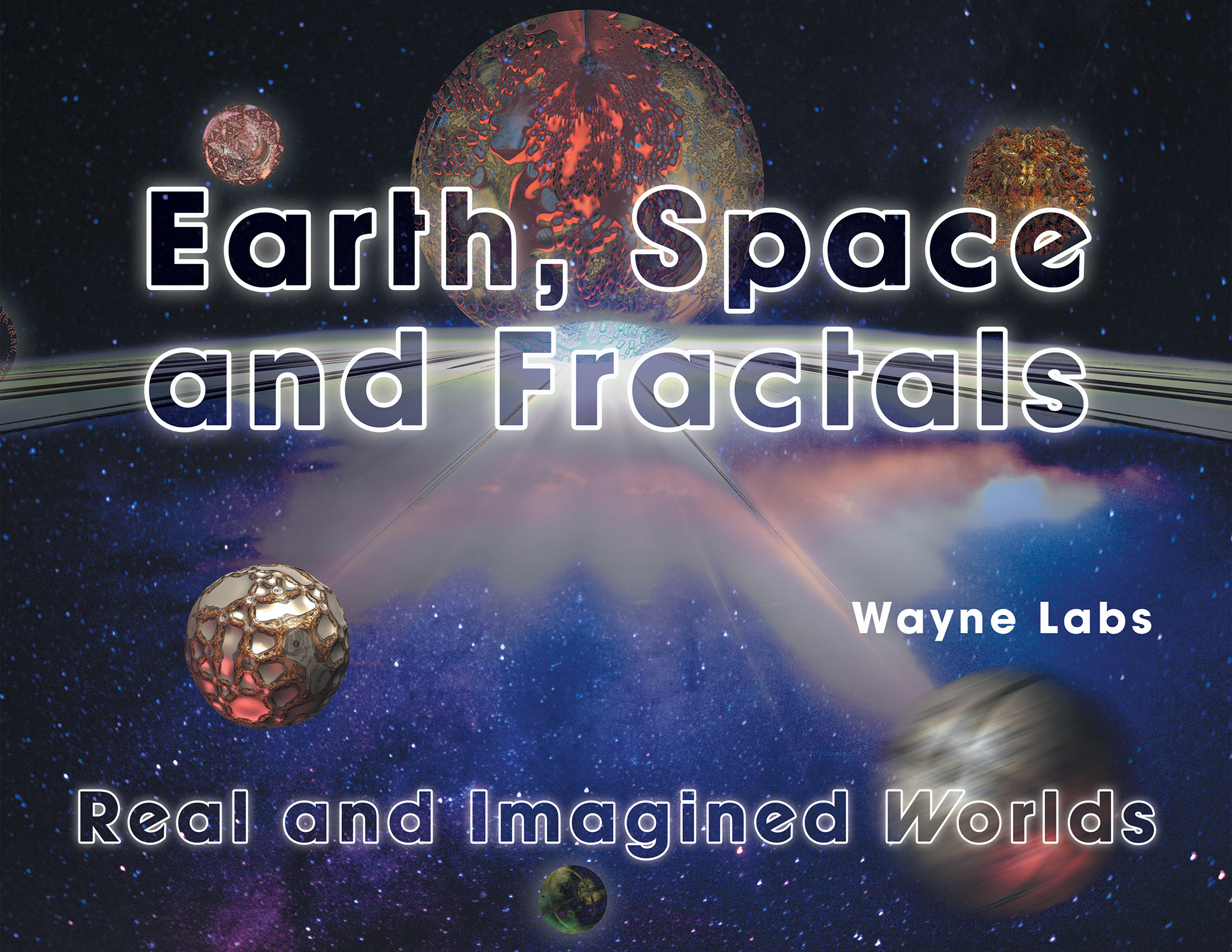
Available Now!
With more than 370 pictures, Earth, Space and Fractals demonstrates the endless array of fantastic and otherworldly images that can be created with today’s fractal generation software.
The book is laid out in art-folio style with many of the images occupying a full page to emphasize the beauty and mystery of fractal art.
While many books on the subject deal with fractal mathematics, this book is instead a picture album that provides a wide variety of fractal images that, in some cases, are paired with artistically matched photos of objects in the real world.
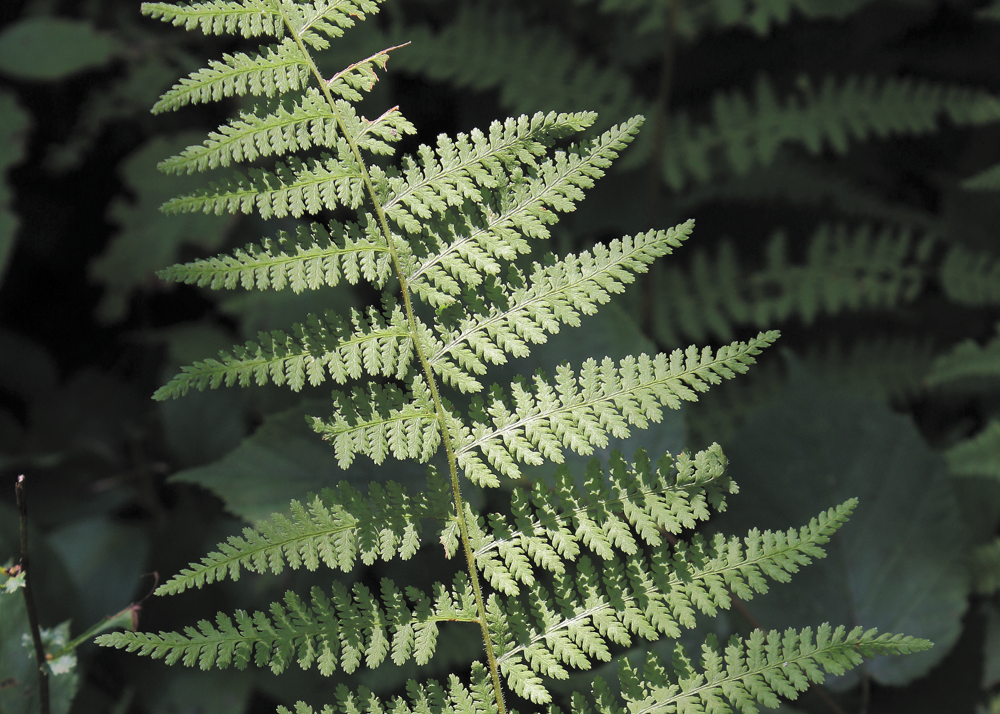
Fern, real
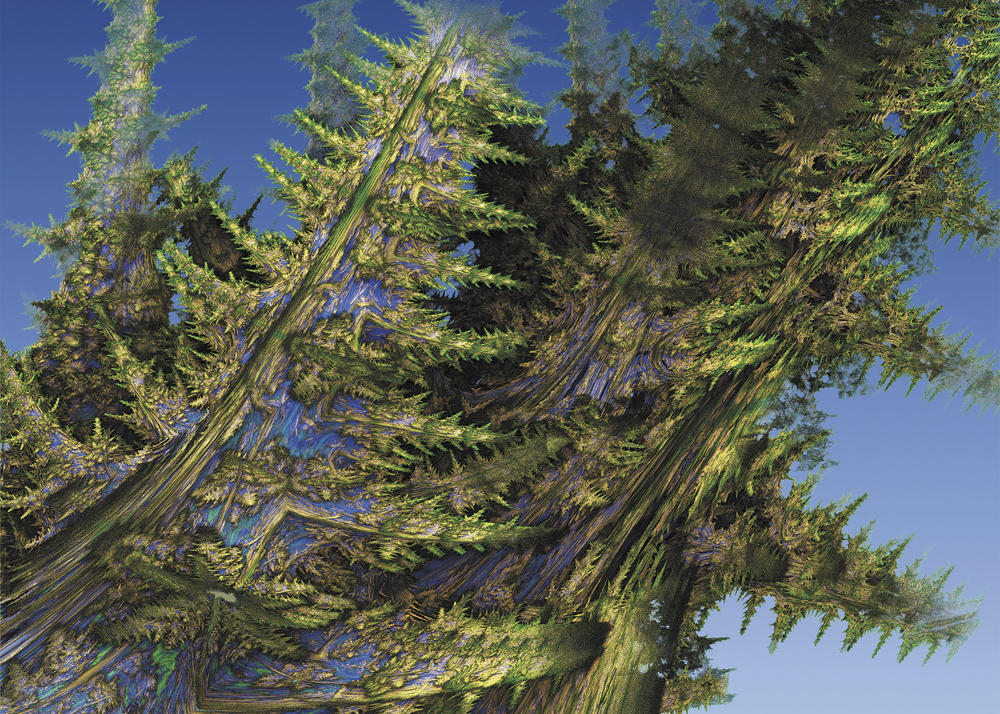
“Fern,” fractal
One look at the world around us reveals fractal patterns and images everywhere. The spiral of our galaxy, structure of our nervous system, pattern of veins in a leaf, craggy nature of coastlines, day-to-day changes in weather patterns, ripples of water in a stream, demands of network traffic on the internet, and the ups and downs of the stock market are all examples of the complexity of nature-that which can’t be easily defined by the traditional Euclidian math and geometry we learned in school. Fractal math works better in describing and predicting how these disordered and chaotic systems work.
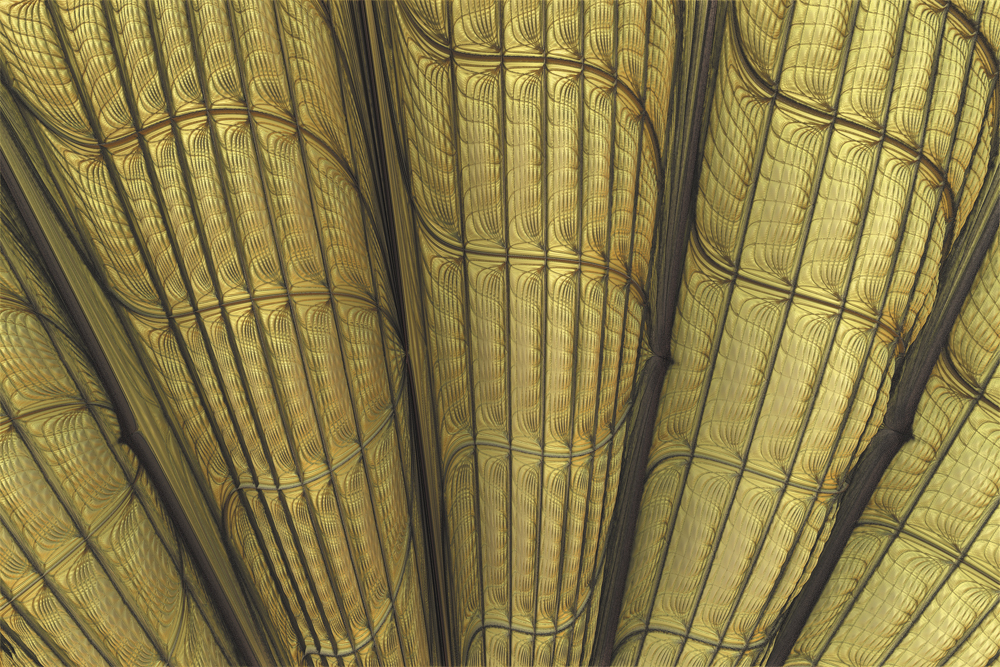
One look at the world around us reveals fractal patterns and images everywhere. The spiral of our galaxy, structure of our nervous system, pattern of veins in a leaf, craggy nature of coastlines, day-to-day changes in weather patterns, ripples of water in a stream, demands of network traffic on the internet, and the ups and downs of the stock market are all examples of the complexity of nature-that which can’t be easily defined by the traditional Euclidian math and geometry we learned in school. Fractal math works better in describing and predicting how these disordered and chaotic systems work.
In the late 1980’s, Benoit Mandelbrot’s pioneering work in the science of fractals spawned a huge public response with trendy fractal images appearing just about everywhere-on posters, clothing, mugs, lunch boxes and more. Moving forward to the present day, free and open-source PC-based software programs such as Mandelbulb 3D and JWildfire make it possible to combine fractal types with literally limitless 3D graphical output to generate images that simultaneously look both “real” and imaginary — and sometimes mystical or ethereal.
In the late 1980’s, Benoit Mandelbrot’s pioneering work in the science of fractals spawned a huge public response with trendy fractal images appearing just about everywhere-on posters, clothing, mugs, lunch boxes and more. Moving forward to the present day, free and open-source PC-based software programs such as Mandelbulb 3D and JWildfire make it possible to combine fractal types with literally limitless 3D graphical output to generate images that simultaneously look both “real” and imaginary — and sometimes mystical or ethereal.
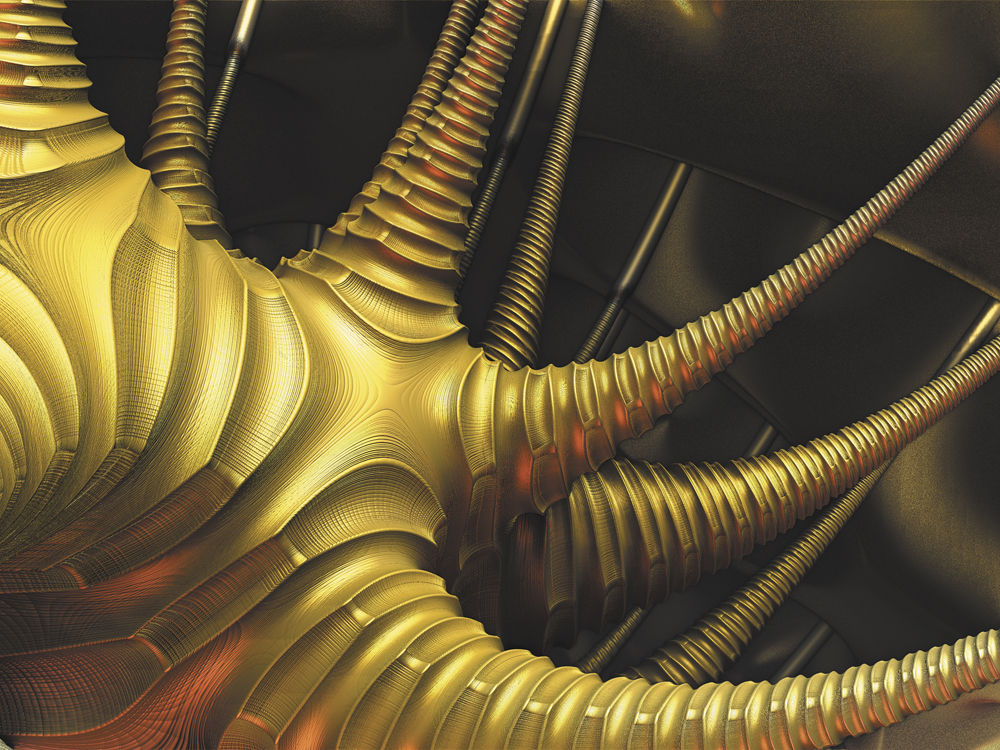
This book catalogs images drawn from ten years of experimentation with fractal software. The folios group similar images: botanicals and life forms, mechanistic forms, architectural forms, places in and out of this world, ornamental forms and mindscapes. A short introduction precedes the folios while appendices offer insight into the creation of the book.
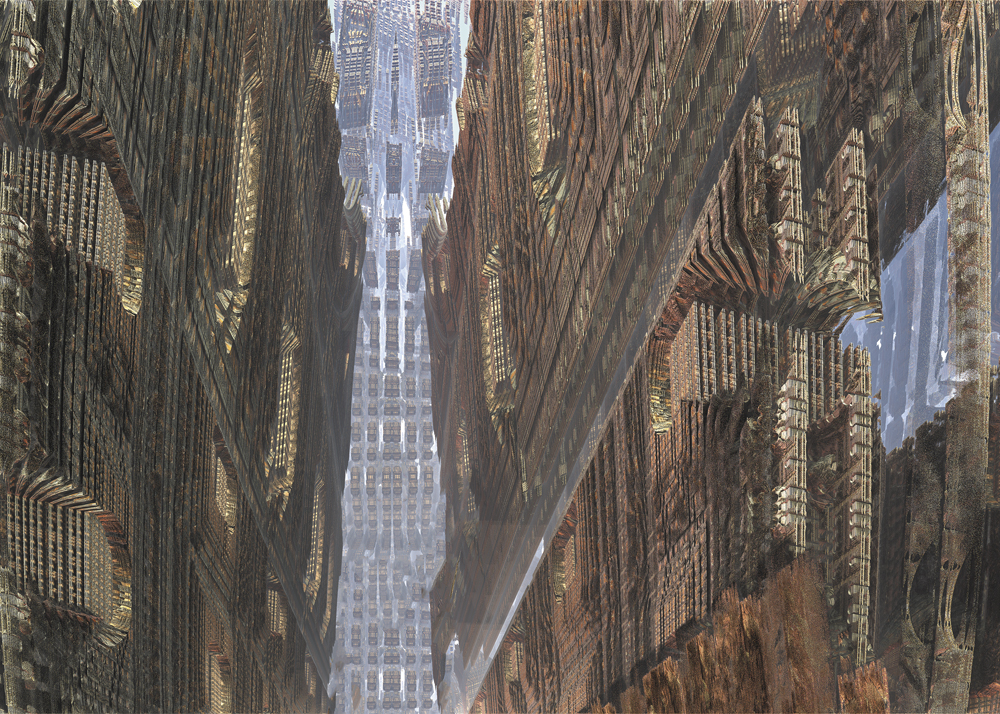
This book catalogs images drawn from ten years of experimentation with fractal software. The folios group similar images: botanicals and life forms, mechanistic forms, architectural forms, places in and out of this world, ornamental forms and mindscapes. A short introduction precedes the folios while appendices offer insight into the creation of the book.
Also Available... Two eBook Versions
Why eBooks—since I had only considered print media?
Since fractals are generated on the computer, they’re really at their visual best when viewed on the computer—that is, through a backlit screen. In creating these fractals and being able to control the lighting on them, it’s possible to get nuances on screen that are really difficult to reproduce on paper—no matter how good the printer is. Why? Prints work with reflected light, and the whitest white you can get is the “base white of the paper,” which may have a reflectance of 90 to 95%—give or take a few percentage points—certainly not the white you can get on screen, especially with the new OLED technologies. Paper is already at a disadvantage if it doesn’t have a reflectance of 100%.
OLED-based screens can produce pure blacks and pure whites, but conventional LCD screens typically have a contrast ratio of 3000 to 1 or better, which is still better than paper. In camera F-Stops, that’s nearly 12 F-Stops or 12 “zones.” Renowned Photographer and Master Printer Ansel Adams worked hard in the darkroom to achieve 11 zones on film and paper—with zone 5 being middle gray, zone 0 being pure black, and zone 10 being pure white.
So the challenge in converting on-screen fractals to something of similar display quality on paper is a real challenge. While output on my high-quality pro-printer looks great on glossy art paper, it doesn’t guarantee the same results from commercial printers and presses—where the author has little or no control. Could viewing these fractal images even at a lower-resolution on screen justify doing an eBook?
I was skeptical until I got started doing an eBook and viewed it on my tablet in a dark room. Once, I saw the results, I was convinced to generate this book as an eBook in two different formats, which meant two more layouts—one variable and one fixed. Due to file size limit on the ePUB version specified by the distributor, I decided to create a new version for Kindle Fire tablets, which can consume higher resolution images, and file-size limits are not an issue with Amazon. Thus, there are two eBook versions.
Earth, Space and Fractals is available with reflowable text in the standard EPUB format. This version features the same photos and fractal images contained in the print version. It can be purchased at most eBook outlets at a list price of $8.99 (ISBN 978-1-944280-05-5).
The deluxe version of Earth, Space and Fractals is available as a Kindle Fire fixed-format edition (horizontal or “landscape”). It features additional photos and fractal images fine-tuned to the aspect ratio of Kindle Fire devices. List price is $8.99 (ISBN 978-1-944280-06-2) on Amazon.com.